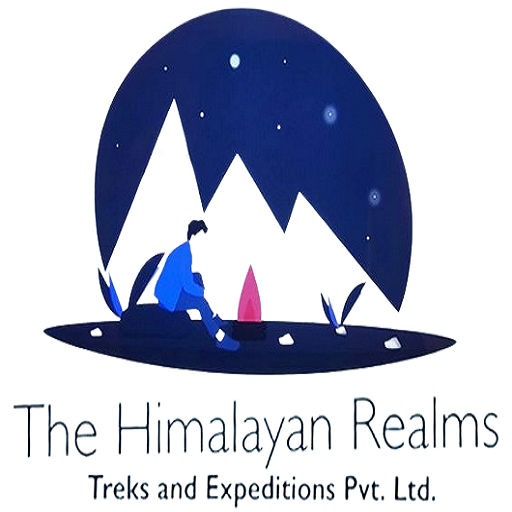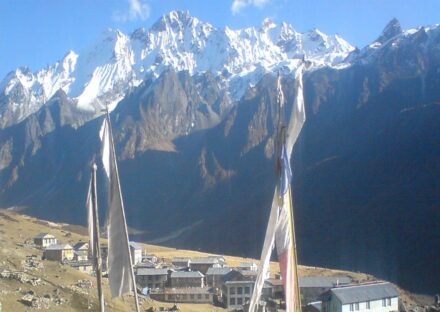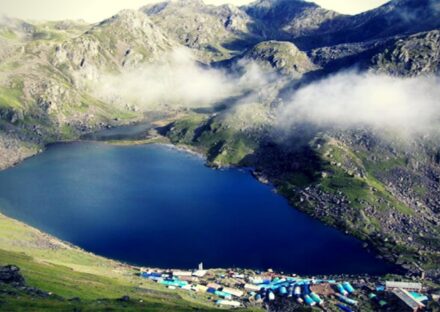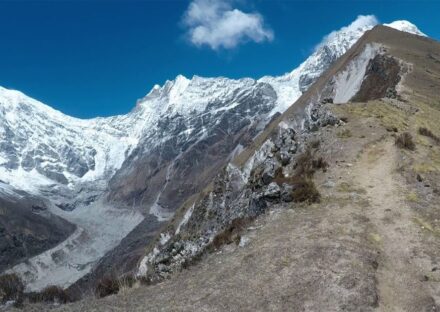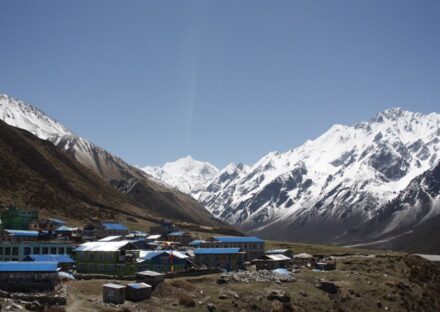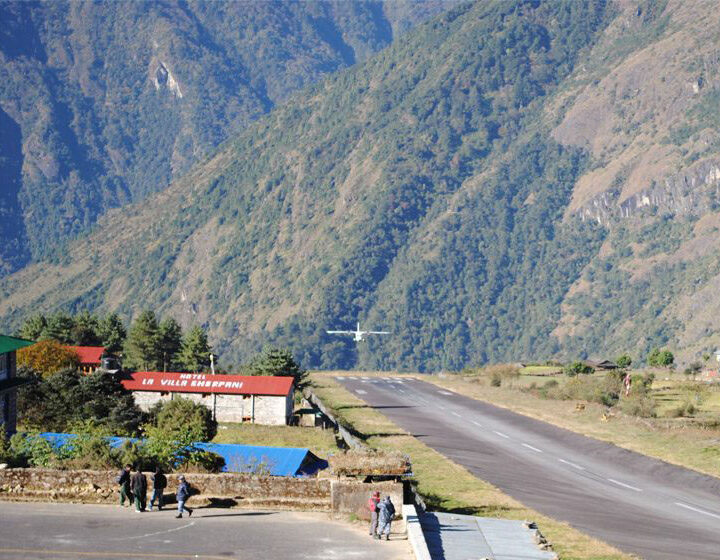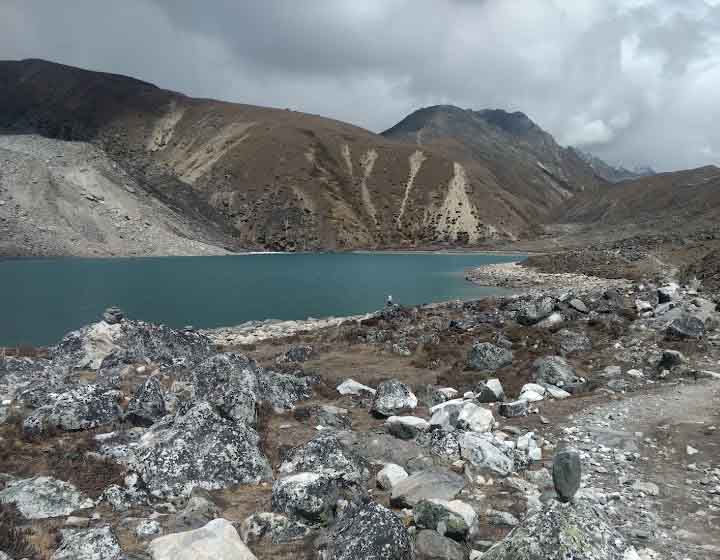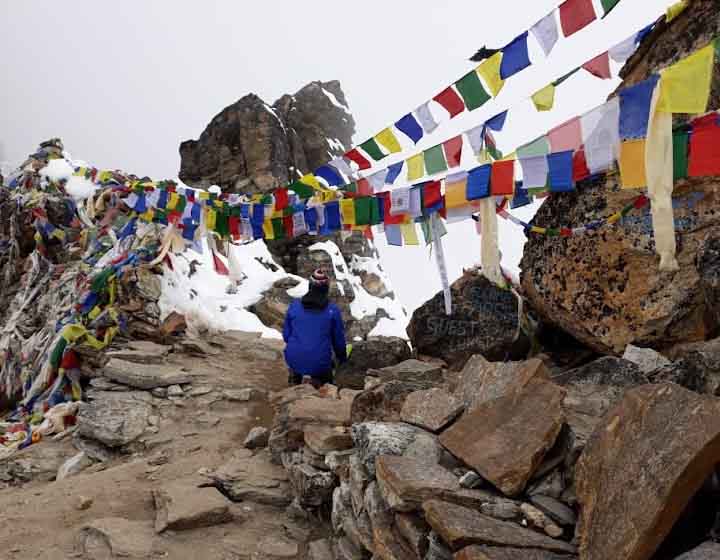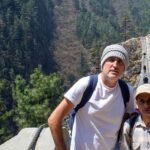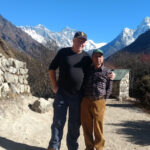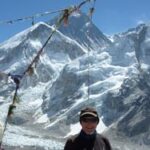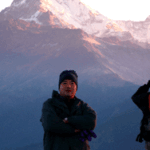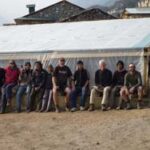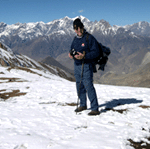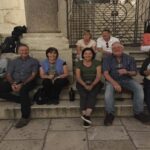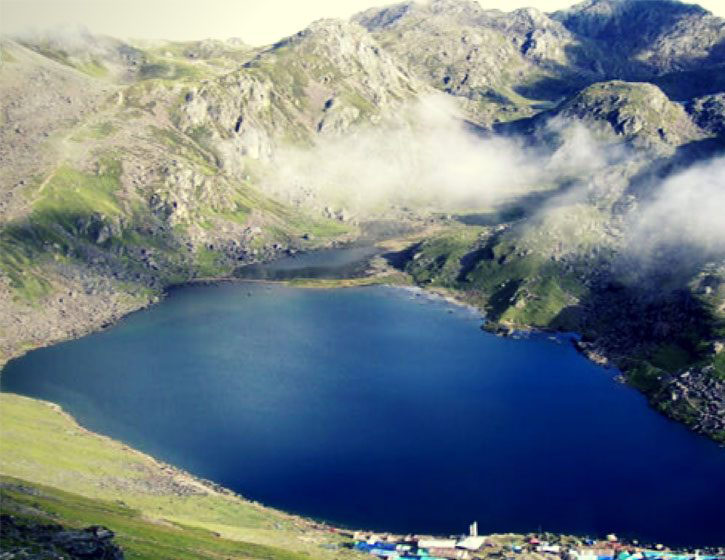
Trip overview
Langtang Gosainkunda Helambu 15 days Trek
The Langtang Gosainkunda Helambu Trek is one of the most scenic and culturally rich trek in Nepal, offering breathtaking landscapes, sacred lakes, and vibrant ethnic villages. This trek takes you through the stunning Langtang Valley, the holy Gosainkunda Lake, and the lush Helambu region, providing an unforgettable journey that blends adventure with spirituality. Ideal for trekkers seeking a mix of nature and culture, this route is a perfect blend of alpine scenery, diverse wildlife, and warm local hospitality. The words Langtang is derived from the Tibetan Language. Where Lang meaning “ox” and Tang meaning “lay down on the ground”. Langtang valley was grassland before starting the trekking route.
Highlights of the Langtang Gosainkunda Helambu Trek
Scenic Views: Langtang offers breathtaking views of snow-capped mountains such as Langtang Lirung, Ganesh Himal, Dorje Lakpa, and others. The trek also takes you through alpine meadows, rhododendron forests, and beautiful valleys.
Tamang Culture: The region is primarily inhabited by the Tamang people, who have a unique culture, customs, and traditions influenced by Tibetan Buddhism. Visitors can explore their villages and monasteries, like the Kyanjin Gompa.
Less Crowded Trails: Unlike Everest and Annapurna regions, this trek offers a peaceful and less commercialized trekking experience.
Lauribina Pass (4,610m): Conquer a high-altitude mountain pass with breathtaking panoramic views.
Accessibility: Being only around 7-8 hours’ drive from Kathmandu, Langtang is one of the most accessible trekking regions in Nepal, making it a great option for those with limited time.
Trekking Routes: The Langtang Valley trek is popular for its relatively moderate difficulty, making it suitable for trekkers of different levels. Your extension of the trek to places like Gosaikunda or explore the surrounding peaks like Tsergo Ri.
Diverse Landscapes – Trek through lush forests, high-altitude lakes, glaciers, and rugged mountain trails.
Earthquake Recovery: After the 2015 earthquake, Langtang valley was heavily affected, but it has since been rebuilding, showcasing resilience and community spirit.
Langtang National Park
It is home to a variety of wildlife, including the red panda, Himalayan tahr, and numerous bird species. The park’s diverse ecosystems makes it an attractive destination for nature lovers. Also known for its rich biodiversity and diverse ecosystems, which include temperate forests, alpine meadows, and glaciers.
-
Flora:
- The park is home to a variety of plant species, including rhododendrons, oaks, pines, and alpine shrubs. The forests are filled with lush vegetation, especially during spring when rhododendrons bloom.
-
Fauna:
- Mammals: Himalayan tahr, red panda, musk deer, langur monkeys, and various species of wild boar.
- Birds: The park hosts several bird species, including pheasants, Himalayan griffon vultures, and snow pigeons.
- Reptiles & Amphibians: You may spot snakes, frogs, and other creatures as you explore the park.
-
Rivers and Glaciers:
- Langtang National Park contains several rivers and glaciers, including the Langtang Glacier, which feeds into the Langtang River. The river, known for its turquoise waters, is a significant feature of the valley.
Authentic Food and Accommodation
Despite the remoteness, the valley provides suitable accommodation with typical Nepalese food service. People are not as outgoing as in the urban area but they are humble and eager to chat with you. Local people have good hospitality and conduct. Regarding accommodation, in the Langtang region, the accommodation is ordinary and has twin-sharing beds. Each tea house has a warm dinning hall and cozy rooms as well. Along the trail somewhere you will get a bathroom inside the room but are not allowed to shower inside. Throughout peak season you must the accommodation a week before.
Sacred Gosainkunda Lakes (4,380m)
Another reason that people often visit to the Langtang Gosainkunda Helambu trek is due to the holy Lake and the easy access to the route from the Kathmandu valley. There are altogether 108 (ponds) lakes around the area but Saraswati Kunda, Bhairab Kunda, Surya Kunda, Naga Kunda, and Gosainkunda lakes are the most fascinating and popular too.
Moreover, the pristine Lake Gosainkunda is also worshiped by Hindu and Buddhist Devotees on special occasions. Besides, the Langtang Tamang Heritage Trek is the best option to explore the religion, culture, and festivals of the Langtang Valley.
Best Time for the Trek
The best time to embark on the Langtang Gosainkunda Helambu Trek is during spring (March to May) and autumn (September to November):
Spring (March to May) – The weather is warm, and the hills are covered with blooming rhododendrons, making the trek incredibly scenic.
Autumn (September to November) – Offers clear skies, mild temperatures, and stunning mountain views, making it the most popular trekking season.
Winter (December to February) – Trekking is possible, but cold temperatures and heavy snowfall at higher altitudes can make the journey more challenging.
Monsoon (June to August) – Heavy rains can cause landslides and slippery trails, making this season less favorable for trekking.
Physical Fitness Level
The Langtang Gosainkunda Helambu Trek requires a moderate to high level of physical fitness. While the trek is not as strenuous as some high-altitude expeditions, it still involves long walking hours, steep ascents, and descents. Here are the fitness requirements:
Endurance – Ability to walk 5-7 hours per day at varying altitudes.
Cardiovascular Fitness – Strong heart and lung capacity for high-altitude trekking.
Leg Strength – Essential for uphill and downhill hikes on uneven terrain.
Acclimatization – Prior high-altitude experience is beneficial but not mandatory. Proper acclimatization days are included in the itinerary.
Mental Resilience – A positive mindset and determination help in overcoming challenges such as altitude sickness and unpredictable weather conditions.
History of Langtang Gosainkunda Helambu Trek
Langtang has long been a significant region for both traders and spiritual seekers. The valley was historically a trade route connecting Nepal and Tibet, facilitating cultural exchanges. In 2015, the Langtang region suffered massive devastation due to an earthquake, but it has since been restored, welcoming trekkers once again. The sacred Gosainkunda Lake holds religious significance for Hindus and Buddhists, believed to be created by Lord Shiva. Helambu, home to the Hyolmo people, is known for its deep-rooted Buddhist heritage and ancient monasteries.
Popular Places
Langtang Valley – Known as the “Valley of Glaciers,” offering stunning landscapes and the famous Kyanjin Gompa monastery.
Gosainkunda Lake – A sacred alpine lake believed to be created by Lord Shiva, surrounded by snow-capped peaks.
Lauribina Pass – A challenging yet rewarding high-altitude pass at 4,610 meters, offering panoramic mountain views.
Helambu Region – A picturesque area inhabited by the Hyolmo people, known for its rich Buddhist culture and lush green forests.
Kyanjin Gompa – A significant Buddhist monastery with awe-inspiring mountain views and a traditional cheese factory.
Cost for the Langtang Gosainkunda Helambu Trek
The total cost of the Langtang Gosainkunda Helambu Trek varies based on itinerary, services, and travel preferences. The Langtang Gosaikunda Helambu trek package typically includes the charges for the guide and porters, and their insurance, equipment, flight, food, and lodging, accommodation in Kathmandu and during the trek, transportation services, and documentation paper work.
Itinerary for the Langtang Gosainkunda Helambu Trek
A typical Langtang Gosainkunda Helambu Trek itinerary typically start from the Kathmandu by driving to Syabrubesi. Then the initial trek start from Syabrubesi (1,550m), without any disturbance from the road way route and following the trekking trails only. The minimum and maximum walking hours vary from 5-7 hours per day at varying altitudes and the individuals walking pace. After the accumulation of the 15 days of trek the journey end in the Melamchi bazar and drive back to the busy city area Kathmandu.
Conclusion
The Langtang Gosainkunda Helambu Trek is an extraordinary journey that combines high-altitude adventure, breathtaking scenery, and deep cultural experiences. Whether you are a seasoned trekker or a first-time adventurer, this trek offers something for everyone. The diverse landscapes, sacred sites, and warm hospitality of the local people make this trek truly special. It is a rewarding journey that leaves trekkers with unforgettable memories and a deep appreciation for Nepal’s natural and cultural beauty.
Note
If you prefer the shorter time trek in Nepal besides the Langtang Gosainkunda Helambu Trek, there are some great options where you can choose to explore with time limit and take the best memory. The following are the must to do short treks in Nepal:
No matter which route you choose, Nepal’s hospitality, natural beauty, and rich culture make every trek a rewarding and memorable journey.
Itinerary
After an early breakfast we drive north from Kathmandu to Dhunche its take about 7 hrs by local bus the road is unsealed and the condition of the road often depends upon the monsoon season. We will travel via Trisuli Bazaar where the dam and hydroelectric project was completed by the Indian Technical Mission. Finally we drive on to Dhunche. Dhunche is the headquarter of Rasuwa District and spend a night there. Stay overnight in the lodge.
crossing it trek up hill about 2 hrs. for the lunch, magnificent view of Mt. Ganesh Himal, Manslu and Mt. Kerung of Tibet can be seen. Trek further for 2 hrs. Through the Jungle and reach to Shyarbru village for rest overnight. Approximately 5/6hrs walk.
Trekking downward about 2hrs. through a forest and again upward about 1-hrs. to reach Bamboo Village (1850) for lunch. Gradually ascend through Bamboo Jungle to reach to Lama Hotel and overnight (5/6hrs walk.
Trek forward through Rhododendron and pine forested area for about 3hrs. And reach Ghoda Tabela for lunch, rest there for acclimatization.
After trekking about 3 hrs real reaches to langtang Village (3500 m) this village is inhabited by Tamangs and Tibetans whose religion is Buddhism. After lunch at Langtang village, trek further for about 3 hrs and rich to Kyanging Gompa and rest overnight. This place offers beautiful view of Mt. ganchempo and Langtang Himal (6 hrs walk).
For 3 hours trek upward to reach to yala and take lunch. Then rest or proceed for a small walk to take a view of Langsisa Himal , Yala and Lirung Glacier then return back to kyanging Gompa.
trek back by same rout.
trek back by same route.
Trek up wards through the forest of fire and Rhododendron. The only human habitations are the shepherd’s occasional huts at the water point. camp near the deserted sing Gompa (6/7hrs) walk.
a steep rugged trail but adequately compensated by dramatic views of Himal Chuli ( 7893 m) manaslu ( 8156 m) Ganesh Himal ( 7406 m) and possibly Annapurna Range of the west; the beautiful valley of Langtang Lirung on the north. Passing by a few huts in the high pasture of lauribinayak and crossing a small ride, have the first look of about a dozen holy lades; saraswotikunda, Bhiravkunda, and Gosainkunda are the main holy lakes among them. Gosainkunda was created by lord Shiva when he pierced his Trident to obtain water to quench hid thirst after having swallowed “Kalkut” the most dangerous posion according to the legend (6/7 hrs) walk.
Continue the trek over rugged trails and pass several lmaller lakes to Thadepati pass (4602m.) then, descend along a ridge to the tree line. Continue to descend to reach to Thade pati through Juniper, Rhododendron forest, beautiful water falls and rest overnitht Thadepati. Approximately 8hrs.walk.
Drop steadily all day though Fir and Rhododendron forest and pickly leafed Oak Forest enjoying the excellent views of the mountain, the Helambu valley and reach to Gul Bhanjyang to rest overnight. (6/7hrs.)
Two days trek consists of gentle ups and downs following a ridge to reach Chisapani with excellent views of Himalayan range from Mt. Manslu to Mt. Everest (6/7hrs.walk)
Climb to the small pass at Burlang Bhanjyang (2,138m.) and take a last look at the great range of the snow peak of the Himalayas before descending to Sundarijal and drive to Kathmandu from Sundarijal (4/5hrs walk.)
From hotel to Trivhuvan international airport: – today is free or last minute you have few hour special shopping for your relatives. If you have more time you can do some shopping or sightseeing then We will drop you to the International airport to catch your flight back to your home and wish for your Safe journey.
Included
- 2 Night accommodation in Kathmandu with a B/B basis plan
- Kathmandu to Syabrubeshi transfer by bus.
- All airport and hotel transfers
- National permit & TIMS permit ( Trekking Information Management System)
- Accommodation, food and tea/coffee during the trek
- Guide:- including salary, insurance, equipment, flight, food, and lodging
- Porter:- including salary, insurance, equipment, food, and lodging
- Transfer from Malemche Bazar to Kathmandu to Kathmandu by private Car
- For guest:-Down jacket, Good sleeping bag (down jacket and sleeping bag are to be returned after trip completion)
- All government and local taxes
- sleeping bag and down jacket
Not Included
- Food in Kathmandu Lunch & Dinner)
- Bakery food during the trek. When you eat in the bakery that you need to pay by yourself
- Nepal Visa fee
- International airfare from your country to Kathmandu and from Kathmandu
- Extra night accommodation in Kathmandu
- Travel and rescue insurance if the guest gets mountain sickness and needs to rescue helicopter.
- Personal expenses example (phone calls, laundry service, bar bills, battery recharge, extra porters, bottle or boiled water, shower etc)
- Tips for guide and porters
Join Us Upcoming Trips
Book this trip with us. Here are the upcoming dates. Feel free to share this trip with your friends and family. For custom trips or general inquiries contact us.
| Departure Date | Trip Duration | Price | Status | |
|---|---|---|---|---|
| 01 October, 0025 | 15 Days | $1465 | Fixed departure | |
| 16 October, 2025 | 15 Days | $1465 | Fixed departure | |
| 12 November, 2025 | 15 Days | $1465 | Fixed departure | |
| 12 December, 0025 | 15 Days | $1465 | Fixed departure |
Useful Info
Overview of the Trek: -
Duration: 12–18 days (flexible depending on the route) Difficulty: Moderate to strenuous Maximum Elevation: 4,380m (Gosaikunda Lake), 4,610m (Lauribina Pass)
Best Season: Spring (March–May) and Autumn (Sept–Nov)
Permit Required: Langtang National Park Entry Permit & TIMS card. Accommodation: Teahouses & lodge. Starting Point: Syabrubesi (7–8 hrs drive from Kathmandu)
Ending Point: Sundarijal or Melamchi Bazaar
Highlights of the Trek: -
Langtang Valley
Known for its stunning alpine scenery and Tamang culture. Key places: Syabrubesi, Lama Hotel, Langtang Village, Kyanjin Gompa. Visit Kyanjin Ri (4,773m) for breathtaking mountain views. Home to Langtang National Park, rich in flora and fauna (red pandas, Himalayan tahr).
Gosainkunda Lake
A sacred alpine lake at 4,380m, important for Hindus and Buddhists. Pilgrimage site, especially during Janai Purnima festival (August). Surrounded by other lakes like Bhairav Kunda and Saraswati Kunda. Stunning sunrise and mountain views.
Helambu Region
Culturally rich, inhabited by Tamang and Hyolmo people. Lush green forests, waterfalls, and terraced fields. Pass through charming villages like Tharepati, Kutumsang, and Chisapani. Close to Kathmandu but less crowded.
Best Time to Trek
Spring (March–May): Rhododendrons in full bloom, mild weather. Autumn (Sept–Nov): Clear skies, great mountain views. Winter (Dec–Feb): Possible heavy snowfall at Lauribina Pass. Monsoon (June–Aug): Slippery trails, leeches, but lush landscapes.
Essential Tips
Altitude sickness: Be cautious above 3,000m, acclimatize properly.
Packing: Warm layers, rain gear, trekking poles, water purification. Food & Accommodation: Simple teahouses with dal bhat, noodles, soups. Local Culture: Respect local customs, greet with "Namaste." Guides & Porters: Recommended for safety and support.
FAQs
-
What is the difficulty level of the trek?
The Langtang Gosaikunda Helambu Trek is considered moderate to challenging, mainly due to the high-altitude areas like Gosaikunda. It is suitable for trekkers with prior trekking experience and good physical fitness.
-
How long does the trek take?
The trek typically takes 12 to 16 days, depending on the pace and the specific route. It includes acclimatization days, especially when trekking to higher altitudes like Gosaikunda Lake.
-
What is the best time to do the trek?
The best time to do this trek is during the spring (March to May) and autumn (September to November) months. The weather is clear, and the trekking conditions are ideal during these times.
-
What is the maximum altitude of the trek?
The highest point of the trek is Gosaikunda Lake, at an altitude of about 4,380 meters (14,370 feet). This requires proper acclimatization to prevent altitude sickness.
-
How difficult is the altitude?
Altitude sickness can occur above 3,000 meters (9,843 feet), and the trek passes through elevations above this level. Proper acclimatization, hydration, and a gradual ascent are key to preventing altitude sickness.
-
Is there mobile network coverage during the trek?
Mobile network coverage is available in most places on the trek, especially in Langtang and lower-altitude villages. However, as you go higher (towards Gosaikunda and Helambu), the coverage may be limited, and you might have to rely on satellite phones in remote areas.
-
Do I need a permit for the trek?
Yes, you will need the permits for the trek.
